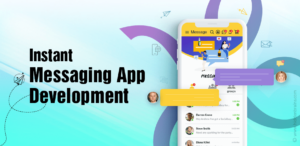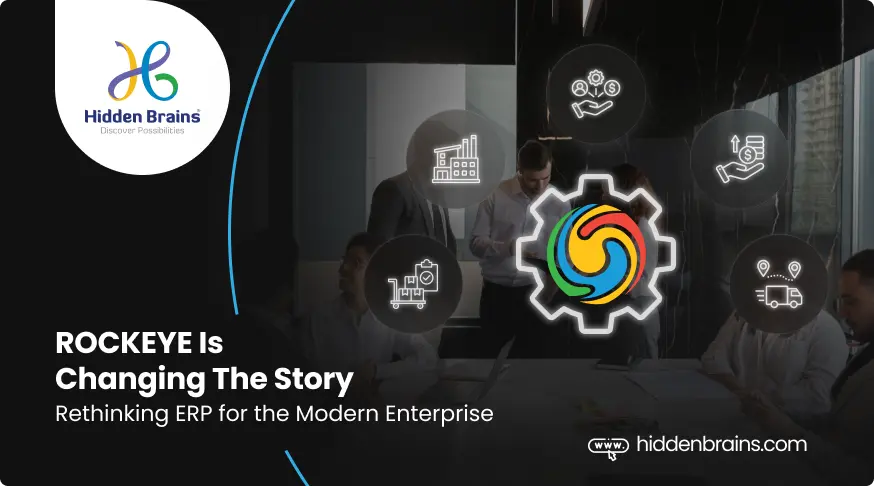Instant Messaging applications have been at the cornerstone of communication during the COVID-19 pandemic. Messaging apps have fast become a unilateral way of communication, not just with relatives, but also with colleagues. Right from text messaging, video call, file sharing, and collaboration, messaging apps are offering numerous ways to stay connected with people who are quarantined or want to avoid meetings.
Be it personal or business, messaging apps can revolutionize the way we live in the new normal. They can be the best productivity tool to enhance teamwork, make conversations and grow interactivity. On the other hand, messaging apps bring people closer together during troubled times.
Messaging apps help strike a meaningful conversation between users in the digital world, facilitating connectivity and convenience. In the new normal, it is also a safe method.
Very soon emerging technologies such as AI, ML, and bots will bridge the gap between messaging apps, bots, and voice-based agents. These new conversation interfaces will help users take a leap and change the relationship that B2C marketers have with customers.
Narrow down on the platform
So you are ready to take a plunge in instant messaging application development. But before you begin the app development lifecycle, it is vital to narrow down on the platform. Are you looking to tap on Android or iOS users? Are you looking to build a native or cross-platform app?
Remember, your decisions will be based on different factors. Native apps take advantage of the features of the platform and device to the fullest level. Ultimately, they provide an enhanced user experience for the particular platform.
However, platform decisions are strategic business decisions. If you are looking to reach out to maximum users, it is crucial to opt for cross-platform app development. Developing apps for each platform might put a strain on resources.
Think about Target Audience
It is imperative to consider your target audience before building your messaging app. Is your app business-centric or user-centric? Based on your audience, features will vary. This will also help you eliminate unnecessary elements and define the scope of your instant messaging app development.
For instance, a business messaging app might require emerging technologies such as Chatbots and AI, among others to connect different stakeholders of the business. On the other hand, user-centric applications might not require advanced features from the word go.
The exact scope and functionalities of the mobile app should be based on extensive research of the target audience and its needs. Think target audience first and always.
Minimum viable product
Minimum viable product is the first cut version of your app with key features. Devoid of all the clutter, this version includes core features only and no additional features, the scope of the messaging app changes in future iterations. MVP can give the developers an exact estimation of defined timelines.
But an MVP can be a tricky proposition; if you create a bare version of MVP, it might not add value. After all, today’s savvy users need all features in the latest apps. It is crucial to building a competitive advantage.
Remember, the purpose of MVP is to provide value to users while at the same time minimizing development costs.
Make Instant Messaging a Priority: Basic yet fundamental, make instant messaging a priority. MVP should allow effortless group and one-to-one messaging.
Kickstart development
Once you have decided on the features and benefits, it is time to get the ball rolling with the instant messaging application development. If you are not technology savvy, you can hire a mobile app developer or partner with a mobile app development company. It is essential to hire expert developers who can transform strategic ideas into mobile apps.
Research plays a key role in identifying the development company to partner with. It is not an uphill task; rather, research makes it easy to find a development partner.
Features of Instant Messaging Application
If you are planning to create an instant messaging application like Whatsapp here is an exhaustive list of features:
- Authorization
- Contacts
- Instant Messaging
- Audio/Video Call
- Group Audio/Video Chat
- Document & Multimedia Sharing
- Notification
- Location Tracking
- Encryption
- Chatbots
- Message Scheduling
- Channels and Groups
Challenges & Roadblocks
Messaging apps have grown exponentially, however, there are still several roadblocks in front of these platforms to reach their fullest potential. Here are a few bottlenecks and challenges
Retaining and engaging users
One of the key issues prevalent is the short attention span of users. Considering the current scenario, developers are going an uphill task as there is a problem of plenty and abundance. To create a profound impact on the minds of users, it is vital to building engaging apps. One element that can be useful is an effective onboarding experience, as well as a highly contextual and personalized experience.
Robust Security
One of the main challenges in messaging apps is security. After all, there are several confidential details of users. It is important to make security part of the app development process right from the word go. After all, security is of paramount importance, and the focus should be on encryption. In the current scenario, encryption is a prime consideration of many organizations and users.
Lack of Interoperability
The world of messaging apps is highly fragmented with multiple apps and a lack of ubiquity. It is challenging to install multiple messaging apps, find identity within apps and send invitations to chat, and wait for approval before actually chatting.
In exploring the crucial elements of Instant Messaging Application Development, one must consider the intricate aspects of information sharing. For a deeper insight into efficient app development strategies, check out this informative resource: Information Sharing App Development.
Conclusion
There are several messaging apps for businesses and consumers. It is important to ensure security and user engagement levels. There are instant messaging apps for Android, iOS, and web that offer advanced functionalities and quick time to market.






























































































![Sales & Distribution [Oil & Gas] Sales & Distribution [Oil & Gas]](https://www.hiddenbrains.com/blog/wp-content/themes/blankslate/assets/images/sales_and_distribution-icon.74d08193.svg)

![Fluid Terminal Management [Oil & Gas] Fluid Terminal Management [Oil & Gas]](https://www.hiddenbrains.com/blog/wp-content/themes/blankslate/assets/images/fluid_terminal_management-icon.4b3a27a4.svg)































![Sales & Distribution [Oil & Gas] Sales & Distribution [Oil & Gas]](https://www.hiddenbrains.com/blog/wp-content/themes/blankslate/assets/images/sales_and_distribution-icon.74d08193.svg?1.0.0)
![Fluid Terminal Management [Oil & Gas] Fluid Terminal Management [Oil & Gas]](https://www.hiddenbrains.com/blog/wp-content/themes/blankslate/assets/images/fluid_terminal_management-icon.4b3a27a4.svg?1.0.0)
























































































































































































